| Zeitschrift Umělec 2003/3 >> IT’S BEST TO BE AWESOME, OR ON THE EDGE OF THE FAIRY TALE | Übersicht aller Ausgaben | ||||||||||||
|
|||||||||||||
IT’S BEST TO BE AWESOME, OR ON THE EDGE OF THE FAIRY TALEZeitschrift Umělec 2003/301.03.2003 Petr Vaňous | focus | en cs |
|||||||||||||
|
“The capable man is an artist.” (Michal Nesázal)
Michal Nesázal (1963) has been working since 1999 on an ever-expanding series of landscape paintings. The viewer is offered insight into diverse landscape frames, where action is allowed full play through the inherent elements: trees, bushes, rocks, lakes, hills and human dwellings (including their shadows). The outer formal diversity of the earth’s surface, scanned over in both great and small detail, is not the artist’s primary interest. The pictures are too unreal, even ghostlike, closed, and yet at the same time they reach beyond themselves: the color, repeated elements, stylization, manipulation of the horizon, etc. So then what FASCINATES NESÁZAL? What has led him to make these landscape meditations, and what is their purpose? In their creation, Nesázal uses the method of controlled automatism. He assembles single “found” forms, and out of these forms a strangely stylized and unreal space of illusion naturally emerges. During the process he relies on his craftsmanship and experience creating the effect of illusion, using both color and drawing. The artist offers two main impulses, or starting points. The first is to find a motif somewhere on the borderlands of his own consciousness or sub-consciousness. “In a free moment, I look for, find and illusively form the motif.” Using what he has found and formulated, he works further. The second impulse is concentration on the development of the motif. “I ask myself: why am I doing this? The motif is the question: why am I painting this?” The concept then enters the painting during the second phase. In an ideal case, this concept could be described as an attempt at SELF-RECOGNITION. He finds in his investigation of the outer world and its permanent changes the analogy of self-recognition. “For me the outer world is reflected on the level of mood, my personal disposition.” Nesázal prefers the instability and richness of change to consciously cultivated stability and a rational approach in terms of perceiving everyday life. He says: “It’s better to be awesome than an intel- lectual bitch.” And he adds: “I don’t try to solve art as it is, but I constantly deal with the outer world.” Many questions and theses are connected to this. One of them is the questioning of the artist’s place in society. How should the artist “work,” to “make himself understood” within his surroundings? It is a wide field of COMMUNICATION, which doesn’t leave Nesázal in peace. He asks, for example: “Do people really live as we see them around us?” He compares the human masses to the limited circle of people who are in some way interested in art, either as viewers or as creators. He concludes that this elite group can have an unhealthy effect on art communication, leading to misunderstandings and certain deformations in the illegibility of artistic performances, and to sterility and impotence in the art itself. As an example he presents a form of installation which — though excellent in itself — induces minimal feedback and atrophies in time. “For artistic expressions to have a life span, you have to be firmly rooted in the society.” Another field of interest is Nesázal’s STUDY OF SOCIETY. Society fascinates the artist, leading him to search for a suitable point of intersection, where he can “meet” people as an artist. Daily contact with people is what forms his awareness of a viable society. This ideal state — communication with different people about what interests them — is caused by the natural feeling of alienation. “The world is alienated. Full of estrangement. Business is a form of communication. Everything is clear there. Direct rules are defined. In a way, this is FUNCTIONAL COMMUNICATION.” Nesázal looks critically back at the past century: “The whole 20th century was destructive for art. The constantly closing in circles, manifestations and revolutionary changes of forms.” Today, the situation is different. “I start from the place where I live. From the region. I prefer the ‘Czech starting point’ with the goal of capturing a wider audience than just Czechs. This comes somewhat naturally. Maybe because I’m not a system, ‘cosmopolitan’ artist. I have no disposition for this. Cosmopolitan art seems vain to me. But that’s my personal opinion.” So-called Czech regional art, as opposed to cosmopolitan culture, Nesázal also considers an artificially cultivated thing, and therefore a “dead-end street.” Nesázal believes the poor state of art today is due to the fact that it’s being subsidized. “Grants kill art, and the judgements go hand in hand. Shifts in historical standards of art.” The artist offers his own solution: “Art has to a make profit. People have to pay for it themselves.” Against the fatigue and apathy of subsidized art, he places free art, which should participate in business ventures. Something like a big entertainment park. A space for a wide spectrum of people. “Everything should be there — the house of horrors, folk-art, legends... something like this, but generally united in having art as its basis. The project should work with people’s curiosity and thinking. So I started working on the project NEONLAND.” Neonland is the working title for Nesázal’s semi-utopian project of a huge relaxation park for families and people of all professions and age groups. The important thing would be the act of entering itself, clinched at the moment of payment. The viewer pays for the amount of time spent in the park. “People appreciate what they have to pay for. The act of payment is an equal codification for reality. And it enables entry and exit.” Nesázal’s starting point here is the all-popular INSTANT FAST ENTERTAINMENT, the urgent need for quick relaxation for the overworked human organism. As an example, he offers the artificial Japanese forest, though in fact what he has in mind is a more sophisticated ENVIRONMENT. As study material the artist explores analogous consumer-entertainment spaces (Disneyland, Carrefour etc.). He admires the CIRCUMSTANCES OF THE ENVIRONMENT as experienced, for instance, in Las Vegas. For this country, for which Neonland is intended, he suggests a sampling of traditional Czech “mysticism” (tarot cards, white magic), of the simple traditional elements from the region. But the motto TEMPLE OF ENTERTAINMENT is meant for the whole family. “The result should be a functional enterprise offering various interactive illusions of freedom. The illusion of freedom becomes a business matter. I don’t want to create ‘truth.’ Or ‘current’ journalistic art (like Podebal, or Rafani). I want to create something for the broadest spectrum of people, and that’s why sociology is my starting point. Personally, I’m convinced that being a folk enthusiast is the best way. A capable man is an artist, simply a self-made man.” Besides painted landscapes, Nesázal also makes digital landscapes (3D) and their short animations at home on his PC. The artist says this is a hobby only. But at the same time, he admits that these could be “sketches” for Neonland. “If Neonland has a motto for its coat of arms, it will be ‘more freedom.’ Some kind of NEOHUMANISM. Nowadays everyone is working and they find time for themselves only on the weekends, sometimes not even then. I want something which can purify and regenerate a person in a very short time. There, I think, art has a chance.” The question now is, how do his paintings fit contextually into the project Neonland?1 In this case the artist offers a professionally perfect, composed static form: the picture. Viewers themselves create the level of content according to his or her own psychic and mental disposition. The painting is interactive. Therefore the content of Nesázal’s landscapes remains enigmatic, unstable and fluid. As if somewhere inside there is permanent movement of an imaginary substance, which on the surface makes up the hills, mounds, valleys, lakes, and gulfs. All this is inhabited by clear, geometrically consistent stylized landscape elements — trees, bushes, rocks and cliffs, all within the fanciful mirroring. 1. The landscapes were presented in 2002 in Gallery U bílého jednorožce in Klatovy under the title NEONLAND 2202.
01.03.2003
Empfohlene Artikel
|
|||||||||||||
|
04.02.2020 10:17
Letošní 50. ročník Art Basel přilákal celkem 93 000 návštěvníků a sběratelů z 80 zemí světa. 290 prémiových galerií představilo umělecká díla od počátku 20. století až po současnost. Hlavní sektor přehlídky, tradičně v prvním patře výstavního prostoru, představil 232 předních galerií z celého světa nabízející umění nejvyšší kvality. Veletrh ukázal vzestupný trend prodeje prostřednictvím galerií jak soukromým sbírkám, tak i institucím. Kromě hlavního veletrhu stály za návštěvu i ty přidružené: Volta, Liste a Photo Basel, k tomu doprovodné programy a výstavy v místních institucích, které kvalitou daleko přesahují hranice města tj. Kunsthalle Basel, Kunstmuseum, Tinguely muzeum nebo Fondation Beyeler.
|







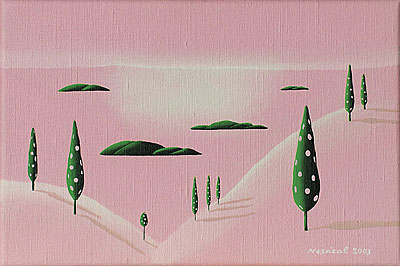




















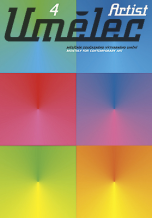
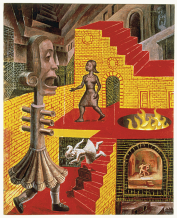
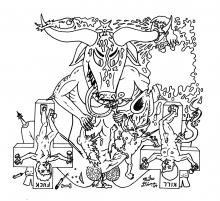
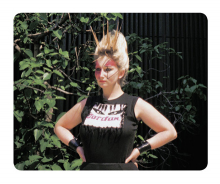


 New book by I.M.Jirous in English at our online bookshop.
New book by I.M.Jirous in English at our online bookshop.
Kommentar
Der Artikel ist bisher nicht kommentiert wordenNeuen Kommentar einfügen